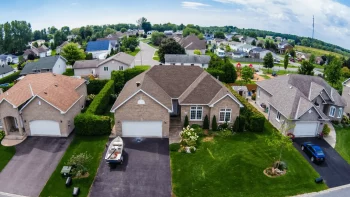Why Every Community Needs an Emergency Mass Notification System
No matter where your community is located, being a public safety leader means having the capabilities to rapidly communicate urgent warnings and instructions in the event of a natural disaster.
Wildfires, floods, hurricanes and severe storms, tornadoes, extreme heat and drought, landslides, earthquakes, and winter storms. This list may sound like possible scenarios for a disaster action movie, but in reality, these are all weather-related events that impact communities across the country regularly. No matter where your community is located, being a public safety leader means having the capabilities to rapidly communicate urgent warnings and instructions in the event of a natural disaster.
When every second counts, disparate systems mean duplicitous work, inefficient reach, and lost opportunities to contact residents and travelers as soon as possible. With an emergency mass communication system as the foundation of your public safety outreach strategy, you can expedite your warnings, alerts, and instructions so that an interruption from Mother Nature doesn’t catch your citizens off guard.
The Importance of Early Warnings
Not all natural disasters arrive with advanced notice. Consider the advanced warning time you’d have in the following scenarios:
- Earthquakes. You may have seconds to warn citizens of an impending earthquake. Though you may not be able to communicate the risk before an earthquake strikes, there are many life-threatening hazards after an earthquake. You should be able to provide your citizens with instructions regarding dangers such as structure collapses, damaged gas lines, and potential aftershocks.
- Hurricanes. Hurricane season begins in June and lasts through November. Most storm systems of this nature are forecasted days in advance. You should be able to prepare your citizens with needed communications before the storms hit if you reach them through every possible communication channel.
- Flash Floods. For communities located in flood zones, weather forecasts may predict the storms and rainfall that can cause flash flooding; however, many times, the window to warn residents and travelers can be only minutes. Flooding is the leading cause of weather-related deaths in the U.S.
- Tornadoes. The National Weather Service can predict tornado-prone weather systems days in advance and can issue watches for areas hours in advance, but when an actual tornado forms, you may only have minutes to issue a warning to residents to take cover.
- Wildfires. These dangerous events can quickly move and jump to new areas, trapping citizens and firefighters with little notice. Communicating the location of a fire, its direction and movement, its wind speeds, and safe evacuation routes within minutes can save lives.
An early warning may be a citizen, traveler, or businesses’ best chance to take safety measures to shelter in place, seek safety in a shelter, or evacuate before a storm’s impact. While advanced warnings are crucial, they cannot be effective if they don’t reach as many residents and travelers as possible.
The Reach Capabilities of Emergency Mass Notification Systems
Today’s high-tech mass notification systems are designed to enable the quick creation and distribution of urgent communications by defining each step and field within the interface so that administrative users don’t have to reference training materials to create a manual notification. The most efficient systems are designed so that administrators can create, confirm, and send a message in seconds and send it through a variety of communication form factors, including text messages, social media accounts, and digital road signage. Compared to the time it would take to create and issue the same notification via an email distribution system, multiple social media platforms, a website content management system, a digital road signage system, and a voicemail alert system, the time-saved is exponential.
The Power of IPAWS Integration
The Federal Emergency Management Agency’s (FEMA) Integrated Public Alert and Warning System (IPAWS) is designed to help create and distribute local emergency notifications to your community through all the nation’s available alert and warning channels. IPAWS allows emergency communication managers to disseminate critical news and information through such government emergency notification systems as:
- The Emergency Alert System (EAS) broadcasts to AM/FM radios and public televisions
- Wireless Emergency Alerts (WEA) sent to capable wireless devices
- National Oceanic and Atmospheric Administration (NOAA) weather radio alerts
- Local sirens
- Digital signs
- Other local and unique systems
Communities that utilize a mass notification system that integrates with IPAWS are best able to amplify their emergency communications and reach as many citizens as possible with critical news, updates, and instructions.
Employee Notification Capabilities
While emergency communications sent to citizens is a critical component of your public safety communication strategy, it can also be said that messaging and holding dialogue with your integrated team of public safety personnel before or after a local emergency is equally vital. If a local disaster impairs normal communication channels, you will need to rely on an alternate, reliable communication system. Look for a single system with such internal communication functionality as:
- Two-way text and email
- Routine notification tools
- Mobile apps for on-the-go communication
- Incident guides and tasks lists
Conclusion
By communicating preparedness and safety information to citizens as quickly and broadly as possible, you can reduce the number of annual natural disaster-related casualties that impact your community. By aggregating your outbound messaging distribution through the use of a single mass notification system, you can spend less time repeating your message and more time implementing safety and recovery strategies.


